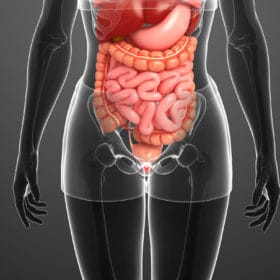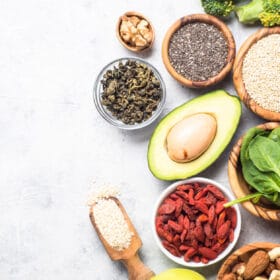In the search for the right diet, strength athletes repeatedly come across the Metabolic diet. When researching, you will often find comparisons with the anabolic diet. If you already have some experience, you will know that you need a lot of protein and only a few carbohydrates with a moderate fat intake. This is exactly where the differences lie, which the Metabolic diet. makes you different. What exactly is this type of diet? What advantages and disadvantages are associated with it?
What is the Metabolic diet?
As the word "metabol" already suggests, the Metabolic diet on the metabolism. It is a form of nutrition that is based on the benefits of the individual nutrients. Although the metabolic diet in the classic sense, it belongs to the group of "low-carb diets". In the metabolic diet, carbohydrate intake is reduced and consumed in balanced amounts at the right times of day. The main focus of the metabolic diet is on proteins. Unlike typical low-carb diets, the metabolic diet does not try to avoid a macronutrient - such as carbohydrates. Instead, the focus is placed on the strengths of fats, carbohydrates and proteins. The respective disadvantages are what should be avoided in the metabolic diet. For example, fats and carbohydrates are largely separated. The ratio of proteins, carbohydrates and fats is distributed as follows in the metabolic diet:
1. on training days:
Protein 60 %, carbohydrates 30 % and fats 10 %
2. on non-training days (or early in the morning for endurance sports without another sports session during the day):
Protein 60 %, carbohydrates 10 % and fats 30 %
What are the benefits of the metabolic diet?
Used correctly, the Metabolic diet is an optimal diet for strength athletes, because the body gets the right amount of carbohydrates at the right time. This means you don't lose any strength during training and supports the development of your muscles. You can significantly reduce the number of calories by following the nutrition plans. Nevertheless, there is no risk of muscle loss, as the Metabolic diet pays close attention to the right amount of protein and carbohydrates. Such a diet brings you a number of other benefits. Protein fills you up quickly. The right intake of carbohydrates not only keeps you strong. It also ensures that you don't get tired (as with too many carbohydrates), or get dizzy spells and don't feel listless (as with too few carbohydrates). Another plus is the balance, which helps you avoid unpleasant plateau phases. The Metabolic dieting avoids these sags because it gives you the opportunity to vary the nutrient distribution of individual foods. For example, you can change the ratio of fats and carbohydrates. This means that your body cannot adjust to a certain metabolic situation, as is the case with other diets.
What are the disadvantages of the metabolic diet?
Although this is not really a disadvantage, it should be mentioned at this point. Initially, your performance may drop slightly. This will settle down once your body has got used to the new diet. The Metabolic diets are associated with effort. The individual recipes can be cooked at normal times. However, sticking to the correct times for carbohydrate intake can be strenuous. This may put you off at first. The same applies to the protein balance, which is essentially what matters. Less dramatic is the fact that many ingredients are not standard. It is easy to rethink your purchasing and storage habits. As the metabolic diet is based on a comparatively high protein content, you should discuss the associated risks with your doctor in advance. For strength athletes who train regularly, the quantity of protein intake is perfectly fine. The Metabolic diets contain many recipes that include the use of protein powder. These are known to be dietary supplements. If you don't want to include them in your main dishes, you can modify the recipes accordingly. This is a common practice.
The Metabolic diet and its essential component: proteins
Proteins are important. You certainly know that. They not only set the tone when it comes to building muscle and filling you up. They also have many other benefits. The Metabolic diet clearly focuses on protein intake. Approximately 60 % of calories should come from protein. This is a very high value and it is difficult to put it into practice. That is why there are detailed recipes that have been designed according to the metabolic diet. Great importance is attached to the biological value of the proteins. High-quality whey proteins and egg proteins in particular are frequently used in the recipes.
The right carbohydrates at the right time
The sticking point that the metabolic diet is the correct intake of carbohydrates. Not only the quantity plays a role here. On training days they should make up 30 percent and on non-training days 10 percent of the total calorie intake. These values have been chosen deliberately, as carbohydrates are urgently needed during endurance and strength training. There are a total of three times when you can consume them. These are the times when you can best absorb your food without accumulating fat unnecessarily. The first time is early in the morning immediately after waking up. You have fasted during the night. Your body's carbohydrate stores are empty and need to be replenished. The second time is directly before training, because this is when you need carbohydrates as a source of energy. Thirdly, you should rebuild the depleted glycogen stores with carbohydrates after training, which supports muscle building.



